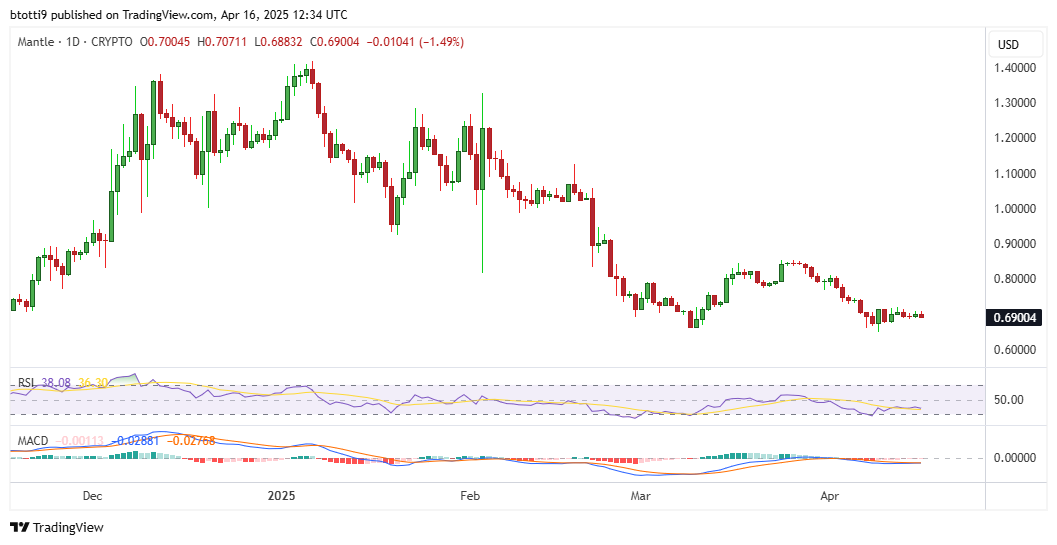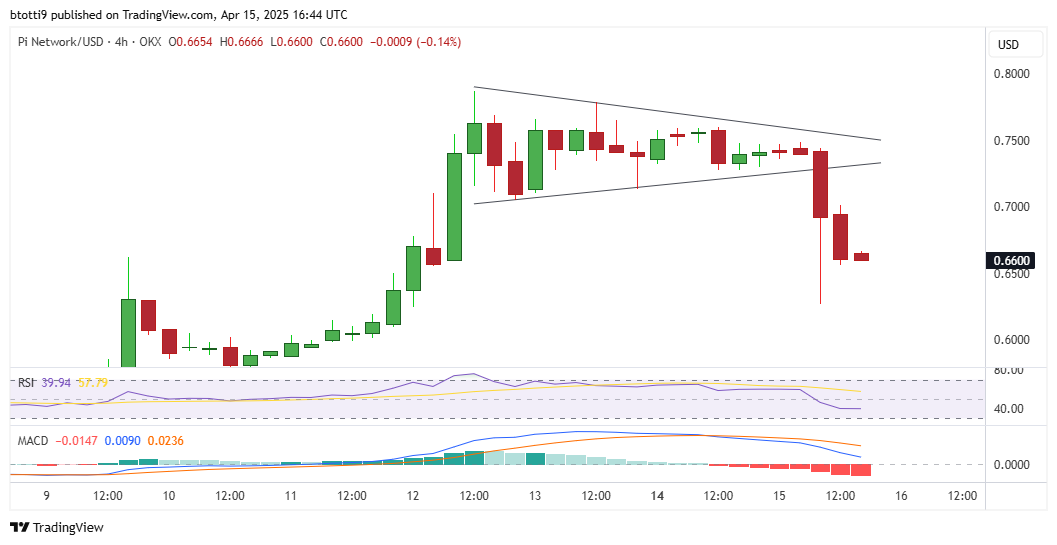- Mantle price sits near $0.7, barely in the green in the past 24 hours.
- But while the price movements point to a lack of momentum, it could explode.
- The broader market performance and Bitcoin’s next moves will be key for altcoins such as MNT.
Mantle (MNT) is trading around $0.70, showing little change on the day and holding a gain of just over 6% for the week.
While these price movements indicate a lack of momentum, they mirror broader market performance.
It also points to a massive consolidation as Mantle signals a potential bottom.
Amid recent updates from the Mantle team, including the launch of Mantle Banking and the Mantle Index Four (MI4), the recipe might be there for MNT to explode in the coming weeks and months.
A move upward for Bitcoin could trigger further gains, as analysts at Glassnode observe.
“Bitcoin’s Accumulation Trend Score is currently at 0.34 – the highest it’s been year-to-date. This suggests that, on aggregate, wallets are beginning to re-enter accumulation mode, with larger cohorts stepping in modestly despite recent price weakness,” the platform posted on X.
Mantle’s ecosystem growth fuels optimism
Mantle is a project that eyes traction within the on-chain finance market, bringing its features to the ecosystem with Mantle Network, mETH Protocol and FunctionBTC.
A big part of its quest is scheduled to go live in Q2 2025, which introduces two major initiatives: Mantle Banking and the Mantle Index Four (MI4).
Mantle Banking aims to bridge traditional finance (TradFi) and decentralized finance (DeFi).
A unified platform where users can manage fiat and crypto finances seamlessly is its core target.
This “crypto neobank” will allow users to receive fiat salaries, tokenize them into stablecoins, and spend globally using virtual cards at competitive fees.
A new standard for on-chain crypto exposure.
Mantle Index Four (MI4) combines yield-generating assets with the structure of a traditional index fund.
Here’s @sohan_sen1 breaking it down ⬇️ pic.twitter.com/zDqqE1NUyH
— Mantle (@Mantle_Official) April 14, 2025
Meanwhile, MI4, backed by a $400 million anchor investment from the Mantle Treasury, is positioned as the “S&P 500 of crypto.”
It seeks to offer diversified exposure to top crypto assets in a tokenized fund format.
These developments signal Mantle’s ambition to mainstream crypto adoption, potentially driving demand for MNT as the ecosystem grows.
Further boosting confidence, Mantle’s ecosystem fund deployed $10 million to support web3 startups, fostering innovation and growth within its network.
The strategic moves underscore Mantle’s traction and potential, key to user growth and impact on MNT’s long-term value.
MNT price prediction: signs of a bottom?
From a technical perspective, MNT appears to be forming a bottom on the macro chart, suggesting a potential reversal from its downtrend.
The Relative Strength Index (RSI) has returned to a level where MNT previously bottomed, a key indicator of a possible trend shift.

Historically, the movements of RSI and MNT have been highly correlated, lending credibility to this signal.
With the RSI suggesting a flip from the oversold territory, Mantle’s price could be ready for a run.
This breakout is likely if bullish momentum builds as the MACD indicator suggests.
The post Mantle price prediction: is MNT signaling a bottom? appeared first on CoinJournal.


